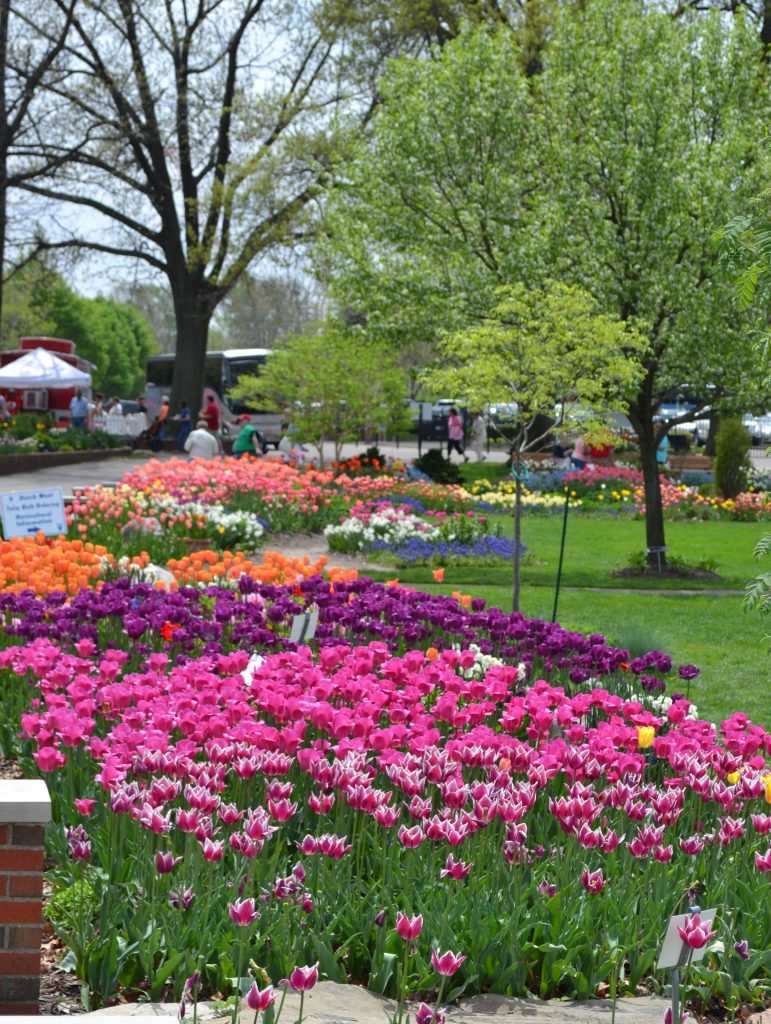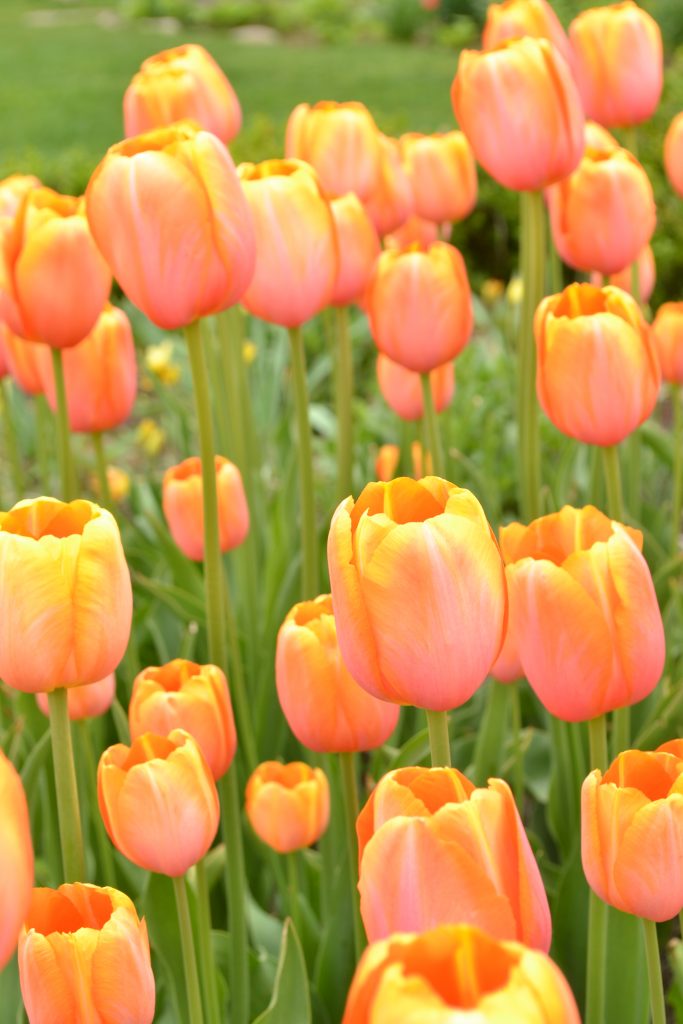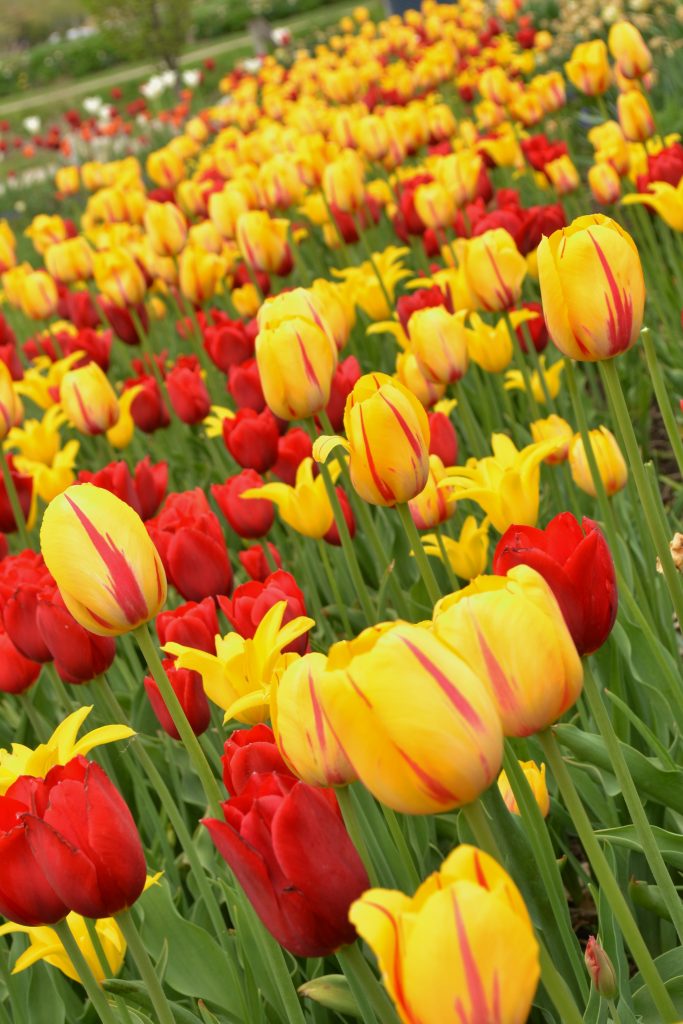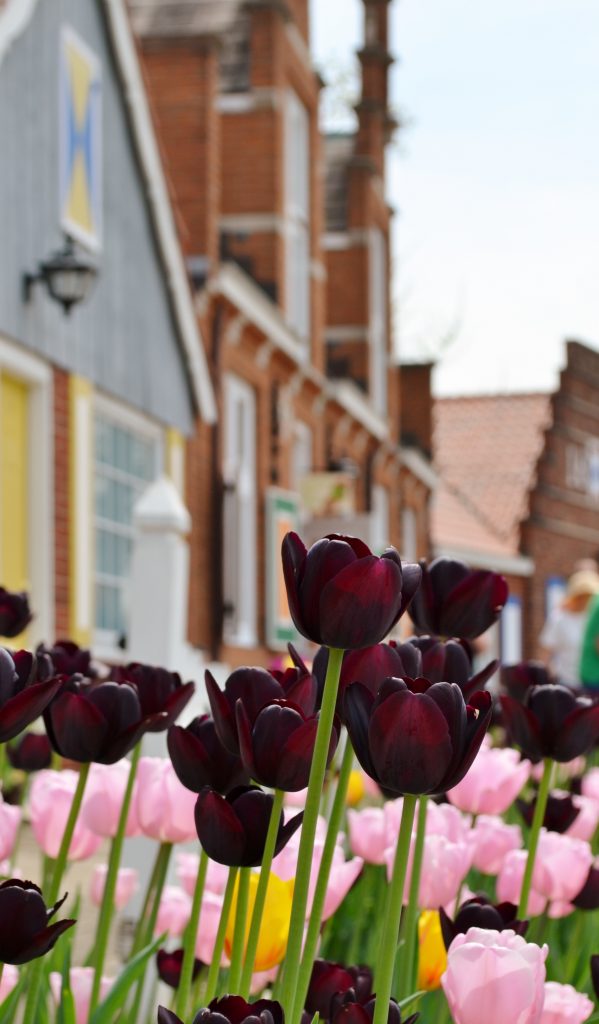Traveling to Holland, Michigan for the Tulip Time Festival, I scheduled time to visit Windmill Island Gardens with its fields of tulips and authentic Dutch windmill. This year, the festival opened on Saturday, May 4th and continues to Sunday, May 12th, 2024.
 Windmill Island is one of three islands on Holland’s Macatawa River. To reach the island’s gardens, visitors must drive over the causeway before reaching the 36 acres of beautiful flowers. As soon as I had arrived on the island I immediately noticed the adorable Dutch village, windmill and never-ending fields of tulips. Planted in late-September, these colorful tulips begin to bloom in late April and can be enjoyed as late as June.
Windmill Island is one of three islands on Holland’s Macatawa River. To reach the island’s gardens, visitors must drive over the causeway before reaching the 36 acres of beautiful flowers. As soon as I had arrived on the island I immediately noticed the adorable Dutch village, windmill and never-ending fields of tulips. Planted in late-September, these colorful tulips begin to bloom in late April and can be enjoyed as late as June.
The park opened the spring of 1965, following the reconstruction of De Zwaan windmill. The restoration project was authorized by the Dutch government as the structure was one of the most damaged windmills during World War II. De Zwaan is Dutch for Graceful Bird or Swan.

To avoid the long lines to enter De Zwaan, I made my first stop at the Amsterdam Street Organ known as the “Four Columns”. Street barrel organs were popular in Amsterdam during the late 1800s bringing the most up-to-date music to local neighborhoods. Children would often drop coins in a box as a token of appreciation for the street musician who was required to purchase a permit to operate. With the advent of the radio, the number of street organs dwindled.
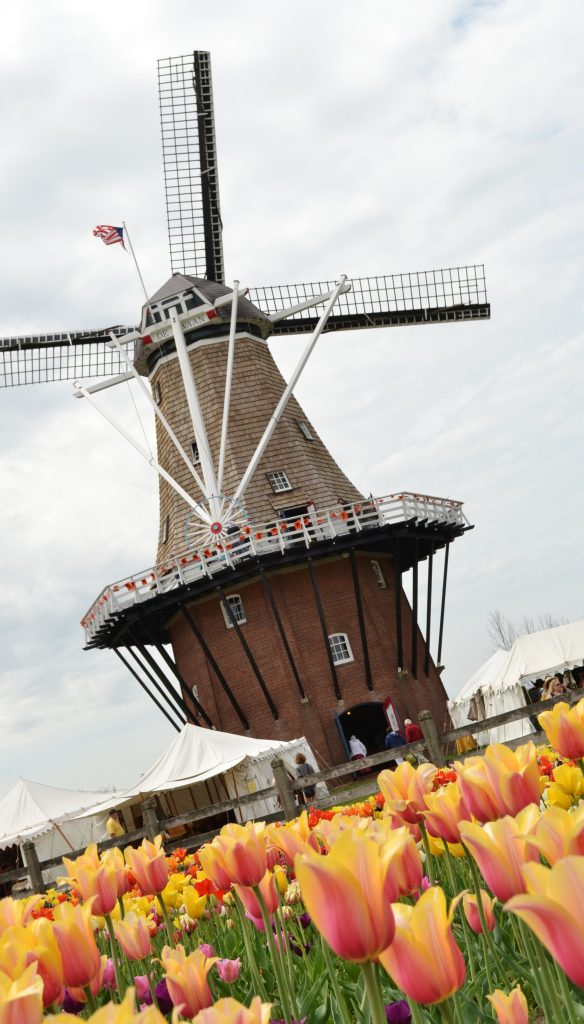
Passing through acres of tulips, I arrived at De Zwaan, the only Holland windmill in the United States. Originally from the town of Vinkel, Netherlands, this once damaged mill was brought over to Michigan on the Prins Willem van Oranje in 1964. It took six months to reconstruct the mill and was dedicated the same year. In 2018, De Zwaan was added to the National Register of Historic Places.
De Zwaan’s construction was purposefully thought out to maximize the productivity of flour. From the slanted ground floor to drain water to the careful design of the blades to utilize wind power, the windmill has several features that are essential to grinding the grain.
Standing 125 feet tall, I climbed the five stories of the windmill, each having its own unique function for the production of flour. At the ground level are double doors where wagons would drop off the bagged wheat. From this level, the wheat was hoisted up to the top level by a pulley system so it could be processed. The miller spent most of his time on the top floor, so if he needed to communicate with the outside world, he would write a note and place it in a wooden shoe. He would lower the shoe to the first floor waiting for the next visitor to read it.

The second and third floors were used for the packing and storing of flour. At De Zwaan, there is a display of the mechanical parts that make up a windmill with an explanation of how they work.
The fourth floor is where the miller can regulate the grinding of the flour by loosening or tightening the connection of the millstones. This determines the fineness of the flour.
On this level, Norwegian fir beams and wooden timbers replace the brick interior, making it a more homey space. If you look closely, you can see the boards are marked with Roman numerals so that the windmill would be much easier to reassemble.
Also known as the gallery floor, the fourth level offers spectacular views of the tulip fields.

The fifth floor is where the millstones are housed and where the miller would spend most of his time. The top of the pulley system is located here which brings up the grain and sends down the messages. When the blades of the windmill are turning, the grinding process begins as the gear in the center turns the millstones. I was fascinated by the whirring of the machine and the soothing sound of the grindstones.
A book about De Zwaan has been written by author Alisa Crawford. She began milling at De Zwaan in 2002 and several years later, applied for a training program in the Netherlands. The Dutch Mill Society approved her application and not only would she learn the craft of milling, but would be required to study the trade in Dutch. Not only was Crawford the first Dutch-certified miller in the United States, she became the first woman to be admitted into the Dutch Miller’s guild. Today, Alisa is the miller at De Zwaan, milling over 10 to 12 thousand pounds of wheat per year.
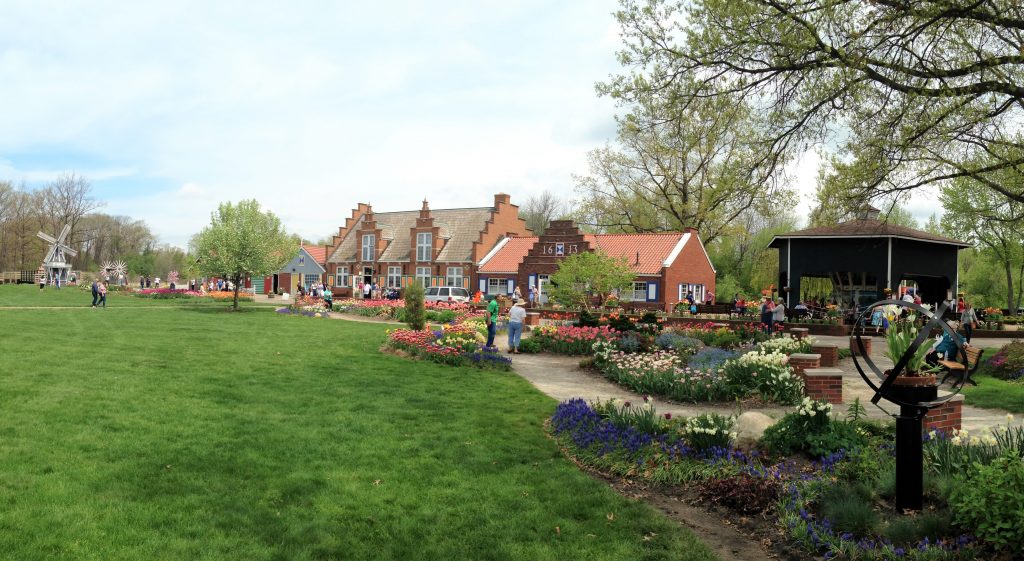
After touring De Zwaan, I strolled through what seemed like acres of tulips. Over three thousand are registered at the park and were labeled by variety, of which there as many as one hundred and fifty. Surprisingly, tulips originated in central Asia and were brought to Europe in the mid 1500s. In the 1600s, tulips were so valuable that they were as expensive as homes. Some historians credit the popularity of the tulip as the reason for the 1637 economic crash.
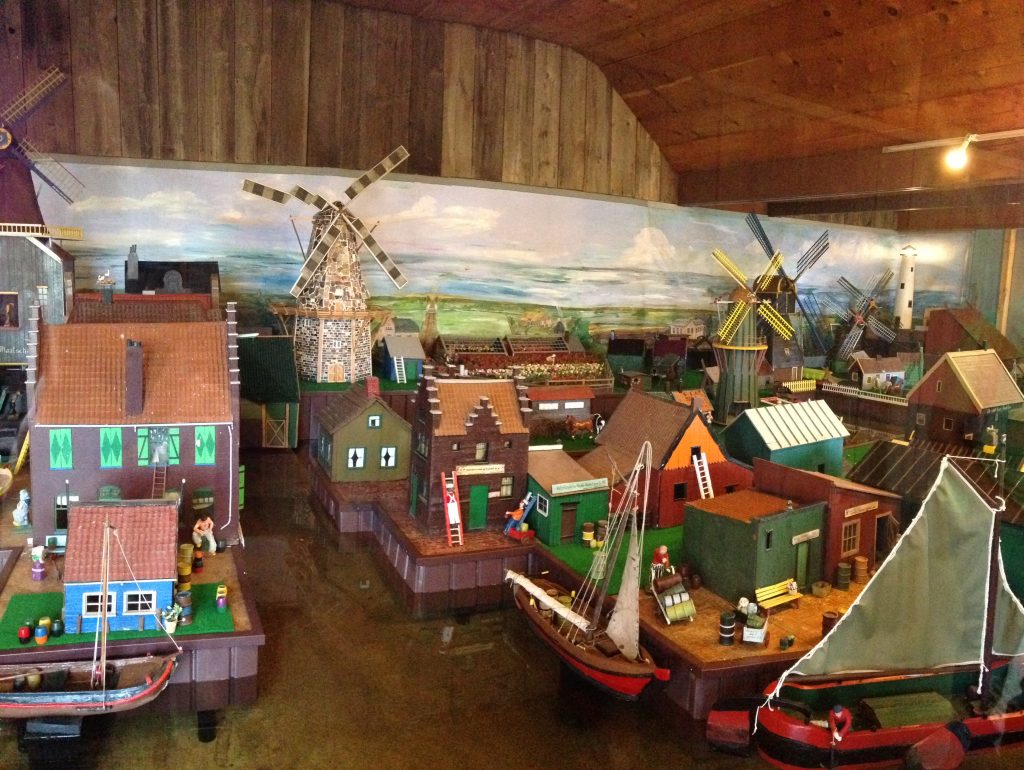
Inside the village was a recreation of a Dutch town with its colorful windmills, modest houses, cobblestone streets and charming canals. The backdrops show endless grasslands with cloudy skies and rolling hills. Many small towns in the Netherlands started out as fortresses and have a large number of historical monuments to explore.
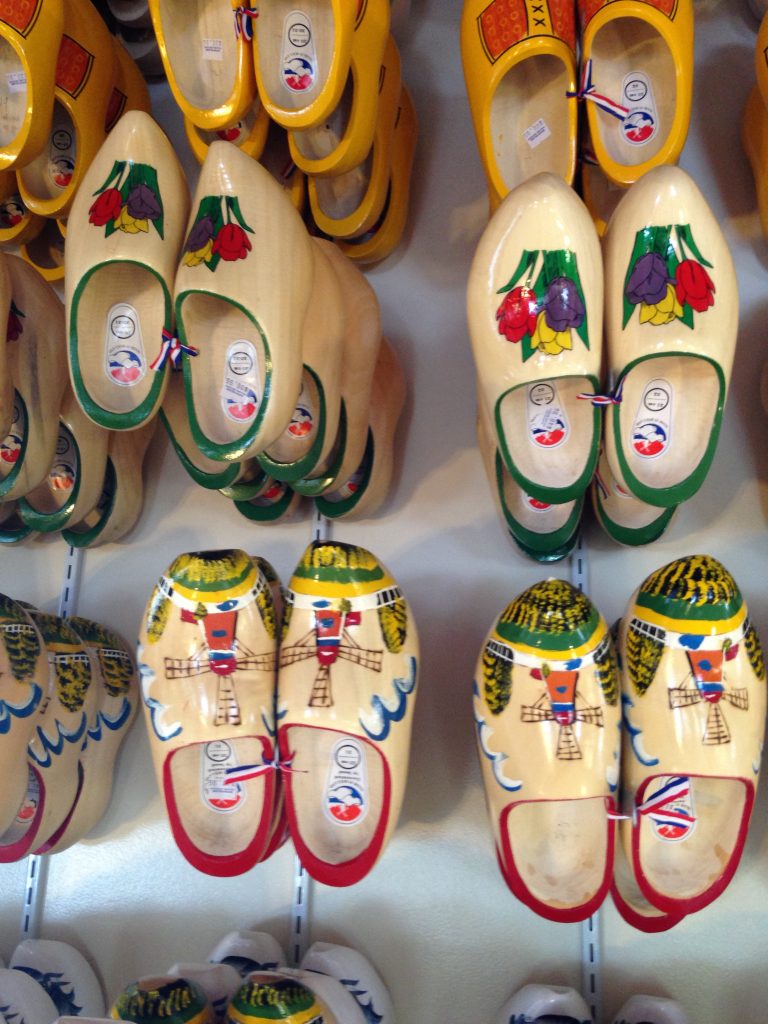
My last stop was the gift shop where I picked up a few pairs of wooden shoes and stroopwafels, a chewy waffled wafer cookie with a caramel filling. The first time I had tasted these yummy pastries was when I stayed at the Schiphol Sheraton Airport Hotel and they would leave them on my pillow each night. I was so excited to find them at Windmill Island Gardens and took me back to the cobblestone streets of Amsterdam.
Have you visited the Windmill Island Gardens or attended the Tulip Time festival in Holland, Michigan? I would love to hear about your experience if you would kindly leave a message in the comments below. Many thanks for reading about my fun-filled day at Windmill Island Gardens and wishing you many Happy Travels!
Scroll down for more photos of the gorgeous tulips at Windmill Island Gardens!
What to See and What to Do:
Windmill Island Gardens
1 Lincoln Avenue
Holland, Michigan 49423
Telephone: 616 355 1030
- Admission Fee: Adults for $12; Children ages 3 – 15 are $6; Last admission sold at 5PM
- Hours: The park is open from April 17th to October 3rd, seven days a week from 9:30AM to 6PM. Tulip Time hours are 9AM to 7PM with the last tickets sold at 6PM.
- Amenities: Free parking, Windmill tours, Amsterdam Street Organ, Welkom Movie and Virtual Windmill Tour, Visitor Services with restrooms, miniature village displays, gift shops and conservatory
- Length of Visit: 2 to 3 hours
- Tips for Your Visit: Check the venue’s website to prepare for your visit during the Tulip Time festivities as well as the Tulip Time website (www.tuliptime.com) in advance to plan their stay during the festival. You will find that not all of the events take place on a daily basis, so checking out the itinerary may assist one with preparing a schedule ahead of time. For example, if you arrive on Friday, there may not be a parade and if you happen to attend on the day of a parade, you can purchase grandstand tickets ahead of time. The site also provides a detailed schedule of the events that take place as well as a great map to help you get around. And if you stop by on a whim, you will find various information stands throughout the enchanting town of Holland that offer assistance as well. Happy klomping!
Where to Stay:
Hampton Inn Holland
12427 Felch Street
Holland, Michigan, 49424
Phone number: 855 605 0317
Hampton Inn is one of my favorite, low cost hotels and this was, by far, one of the best accommodations for this hotel chain.
Where to Eat:
Crust 54 – (two locations in Holland, Michigan)
*54 E. 8th Street, 616 394 3002
1145 S. Washington Avenue, 616 848 7787
*We stopped by Crust 54’s downtown location for Chicago style pizza!
Where to Drink:
- Bam! Brewing
- Big Lake Brewing
- Brewery 4TWO4
- Coppercraft Distillery
- Great Lakes Winery Brewery Distillery
- Hopland Brewstillery
- New Holland Brewing Company
- Our Brewing Companies
- Warner Vineyards
What to Read:
- Holland, the Tulip Town, by Randall P. Vande Water
- Boats Made in Holland: A Michigan Tradition, by Geoffrey D. Reynolds
- Holland, Michigan: From Dutch Colony to Dynamic City, by Robert P. Swierenga
Photo Guide for Tulip Time and Holland:
- The Fields of Tulips throughout the city
- DeZwaan Windmill at Windmill Island Gardens
- Sunset on Lake Michigan
- Polder Molen Windmill at Nelis’ Dutch Village
- Dutch Dancers
- Nelis’ Dutch Village: landscaped gardens, canals, carousel, brick walkways, gardens of tulips, petting farm, Carillon Bell Tower, The East Gate, Dutch houses
- Windmill Island Gardens, merry-go-round, carousel, dutch dancers
Disclosure: Please refer to our blog disclaimer tab for more information.
